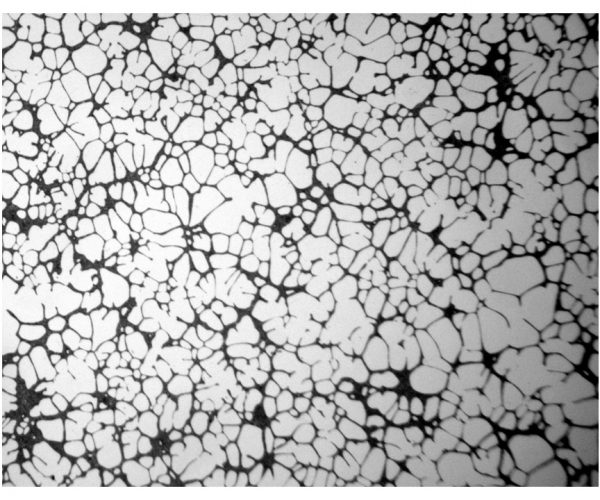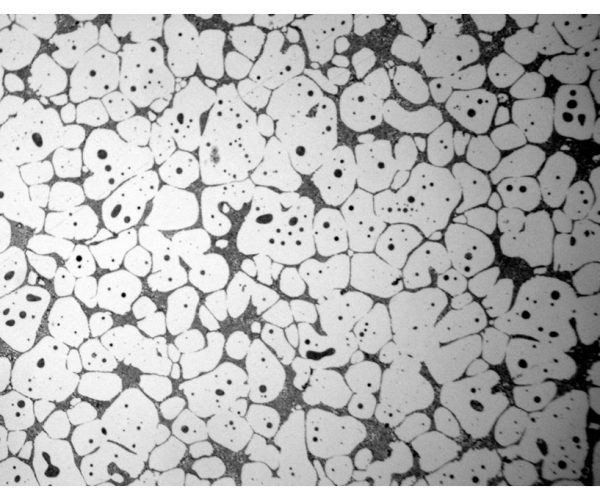Vforge casts thixotropic bar ranging from 2” to 5” diameter, which allows for billet sizing to meet a wide range of shot weights. Billets are cut from the cast bars using horizontal band saws and fed into a multi-station heating system. Starting at room temperature, the billets progress until they are approximately 65% solid and 35% liquid with the solid in the form of globules able to flow smoothly past one another during injection. Below are typical semi-solid aluminum alloy microstructures.
The semi-solid billets are transferred as soft solids to the shot sleeve of the machine which pushes the material through a gate and runner system into the die cavity. Transient injection pressures remain relatively low (<3,000 psi), but final holding pressures can be as high as 25,000 psi. This final injection pressure, coupled with relatively thick gates and runners, assists in feeding solidification shrinkage by encouraging liquid alloy to compress from the biscuit into the solidifying part. After a brief holding time, pressure is released, the die opens, and the shot is ejected. Vforge produces a wide range of parts weighing from a fraction of an ounce to several pounds, using dies containing from 1 to 12 cavities.



